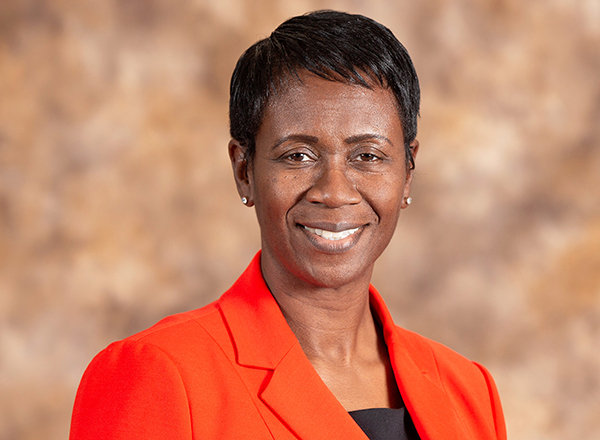The underserved and underrepresented in today’s workforce

Workforce and professional development continue to play a significant role in the global economy, impacting economic growth and bridging the global skills gap. The skills gap is both a domestic and global issue. Jobs are going unfilled, students aren’t graduating with the necessary skills, and high school students aren’t interested in pursuing industries that are facing critical labor shortages such as transportation, financial and business services, education, information technology (IT), and manufacturing.
The challenge to ramp up skilled talent in skilled occupations is not unique. Roughly, more than half of all occupations with significant shortages are for middle-skill level workers requiring more than a high school diploma, but less than a four-year degree. What is left out of the conversation is workforce planning through industry and education partnerships that balance supply and demand.
By the time students reach 7th grade, they may not know what they want to do for a career. However, many students have determined what they do not want to do.
Traditionally, these decisions align with the subject matter students are most uncomfortable with, or subjects in which they are underperforming. The workforce of the future must possess a broad range of skills that prepare workers for a highly competitive global workplace. Modern industry demands a workforce that is flexible, skilled, and can work as a team. Industry also demands workers who demonstrate leadership. Businesses want people who can perform unsupervised in a complex environment, while embracing new technology and processes that increase productivity, quality, and adaptability.
Why some workers are left behind in the new economy
Over the last five years, American businesses have created more than 13 million new jobs.
However, a disproportionate number of Americans still do not feel the benefit of this growth in their own lives. In December 2018, the United States Labor Force Participation Rate increased to 63.20%. However, 36.80% of working-age Americans remain unemployed (Trading Economics, 2018), though many do not show up in official unemployment figures. Furthermore, just 20.2% of differently-abled people are participating in the workforce, compared to 69.1% of people without disabilities (Dermer, 2018).
The overall unemployment rate stands at a 17-year low, resulting in fewer available workers and even fewer skilled workers who are ready to fill current and future job openings. As alarming as this sounds, it is not new. Workers quitting their current jobs, retiring, moving to a new department, or losing their jobs as a result of a layoff or firing is a story as old as time.
What makes this moment in workforce history unique is the convergence of low birth rates, an aging workforce, a robust economy, and in Detroit, the reemergence of a fated city.
The decline in student enrollment at 2-year and 4-year academic institutions and the elimination of vocational education in secondary schools adds to the creation of a perfect storm in the workforce. Education and industry must make a behavioral shift in how we engage non-traditional students to develop a pipeline of talented workers prepared for tomorrow’s workforce.
Industry cannot adequately grow a future-ready workforce without partnerships in higher education. Educators are in the business of developing talent, building the knowledge, skills, and abilities of students who then contribute to the increased profitability of industry. Unlike previous industrial revolutions (steam and water power, electricity and assembly lines, and computerization), the fourth industrial revolution, 5G, and artificial intelligence will impact how we live and what it means to be human. Emerging technologies possess the most significant promise in human history to improve the quality of life and income levels for the world’s population.
Still, while the digital, physical, and biological worlds converge, underrepresented populations are at higher risk of being left behind.
Community colleges as conveners and conduits for tomorrow’s economy
The role of community colleges is more than career education, preparing students to transfer to a four-year university, and building foundational skills. We are conveners and conduits between industry, secondary education, governmental agencies, 4-year institutions, labor and trade associations, and the community. The neighborhood college bridges higher learning, innovation, and the community, which makes the dream of academic achievement possible. The elusive untapped population that industry is seeking can be discovered right here in our classrooms.
Yet, in large part, community colleges are absent from research and technology development collaborations that have created new markets and innovative discoveries. We are absent from boardrooms and partnerships that inform education on the skills needed for the jobs of tomorrow.
Michigan needs to implement a strategy for building a world-class educational program that enables everyone the opportunity to advance to whatever level their abilities and passions can elevate them. Education does not take place in a vacuum. It must be addressed in the much broader context of the communities it serves.
A prepared workforce includes all populations, beginning at the primary level and advancing until everyone who chooses to work is fully prepared to succeed.
Existing workers must be prepared for an environment that integrates continuing education into their ongoing work.
Federal and state governments must provide more significant leadership in setting a regional and national strategy.
Business and industry must provide leadership and a commitment to partnerships in education and training for new and existing workers that will address emerging changes in the workplace.
Community colleges must actively work with business and industry and with government to encourage investment in the model of education that best serves the future of our state and nation.
In the end, it is only through innovative, cross-sector partnerships that we can ensure a robust economy that prepares skilled workers from across all populations to meet the emerging needs of business and industry. Let us work together to reach underrepresented populations with a path to a prosperous future.
This article originally appeared in an Automation Alley blog in February 2020. A link to the original post is here.